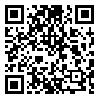BibTeX | RIS | EndNote | Medlars | ProCite | Reference Manager | RefWorks
Send citation to:
URL: http://jams.arakmu.ac.ir/article-1-4384-en.html
2- Department of Environmental Health Engineering, Faculty of Health, Arak University of Medical Sciences, Arak, Iran.
3- Department of Environmental Health Engineering, Faculty of Health, Hamedan University of Medical Sciences, Arak, Iran.
Background: As dental solid waste are among the most important environmental pollutants due to its high contents of toxic and hazardous agents, suitable treatment and management of it are of great importance. The objective of this study was to quantity & quality analyses of dental solid waste and associated management practices in the general dentistry offices in the city of Arak.
Materials and Methods: 15 samples of solid waste were taken from the 5 selected general dentistry offices, classified into 66 components and 4 fractions, and then the quantity & quality characteristics were evaluated. Management practices of the solid waste were also investigated by using a questionnaire.
Results: According to the results, per capita and the average generation rate of each dentistry office were 66.71 g/day-patient and 1340.45 g/day, respectively. Potential infectious, domestic-type, chemical & pharmaceutical, and toxic wastes consisted of 54.25%, 35.14%, 8.19%, and 2.14% of the waste generated, respectively. 10 components including latex gloves, nylon & plastic, saliva & blood-contaminated kleenex, paper & cardboard, used ampoules, saliva ejector tubes, gypsum, food waste, saliva & blood-contaminated dental rolls, and nylon gloves were responsible for more than 80% of the total waste generated, respectively.
Conclusion: Each fraction of dental solid waste (toxic, chemical & pharmaceutical, potential infectious and domestic-type wastes) should be separately collected and disposed of according to the related criteria.
| Rights and permissions | |
 |
This work is licensed under a Creative Commons Attribution-NonCommercial 4.0 International License. |





